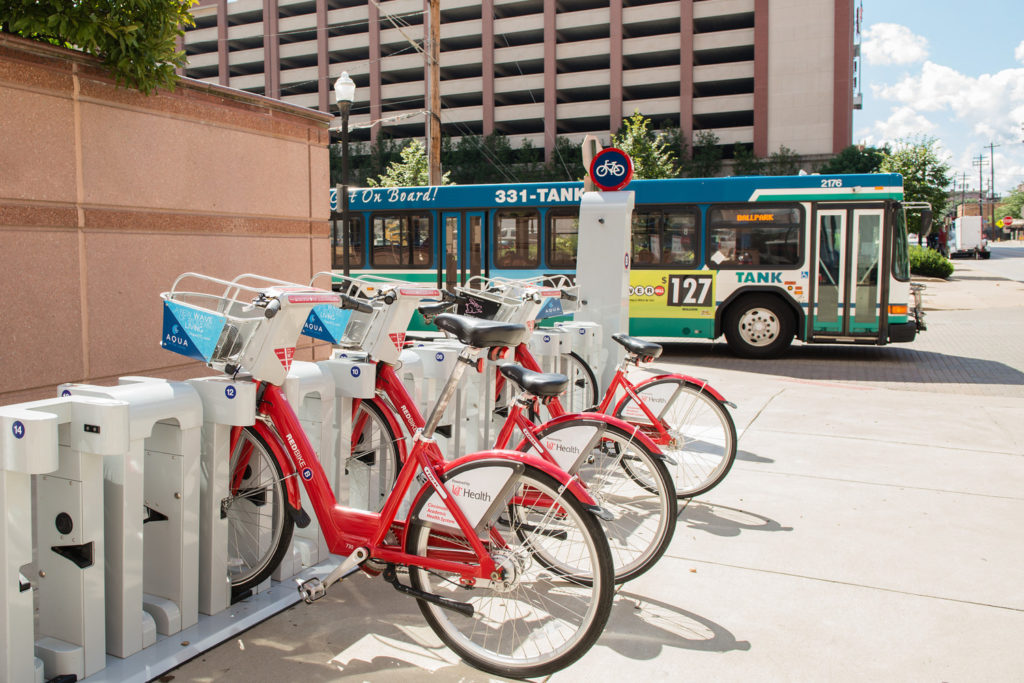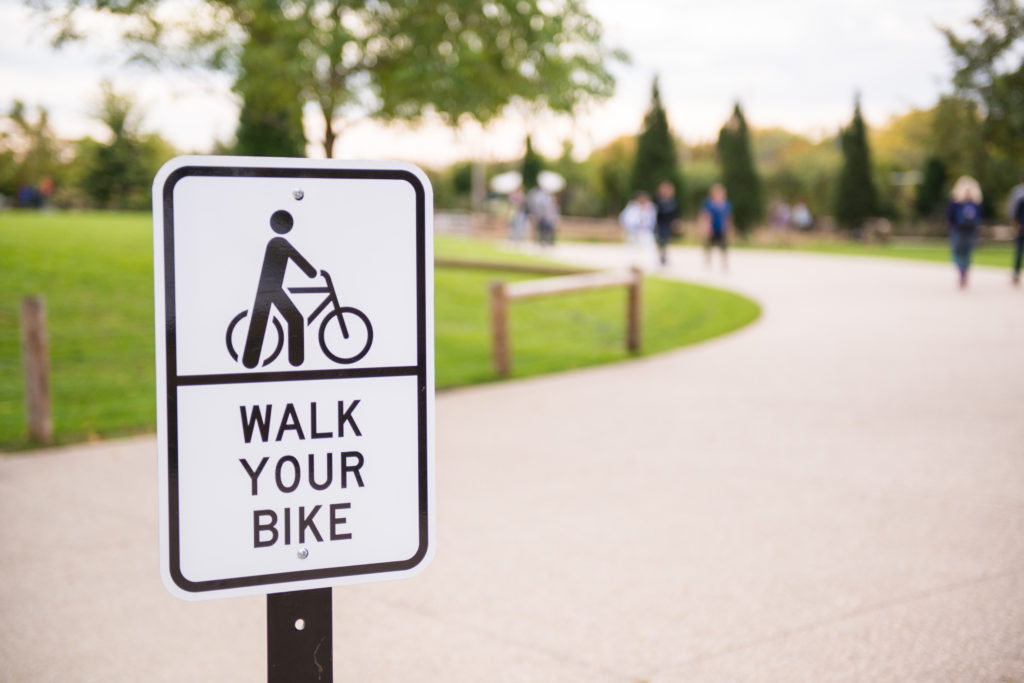
Designing compact, accessible communities makes it easy and safe for people to walk, bike, roll, or use buses and trains. Everyone moves between home, work, school, stores—and more —in daily life. Reliable, sustainable transportation systems ensure people are able to get where they need to go.

What You Need to Know
These key issues are essential to understanding how we can support thriving people and places.
Reliable Transportation
- Transportation has long acted as an economic barrier in the United States.
- Homes are located far from major job centers, services, and stores, requiring multiple car trips daily to reach essential needs.
- The design of our roads produces dangerous conditions for people walking: wide lanes, large distances between traffic signals, and long, unobstructed lines of site make it feel safe to drive fast.
- Transit continues to play a vital role in getting health care and other essential workers to their jobs and providing families with access to medical care, groceries, and other necessities.

Historical Context
The built characteristics of our communities, including infrastructure and development patterns, are a result of decades-old transportation policies and funding systems at the federal, state, and local levels. These policies and funding systems encourage more and wider highways and sprawling development, pushing people to live farther away from the things they need and the places they go, causing most people to drive more every year to accomplish daily needs. These policies will need to change to support equitable and resilient communities as we recover.

Current Conditions
The novel coronavirus pandemic has upended aspects of daily life and mobility that many Americans previously took for granted. It has also made the stark inequities perpetuated by our transportation systems more apparent. Low-income communities, People of Color, and other disadvantaged populations have long experienced the most significant mobility challenges, as well the greatest harm caused by the negative impacts of our transportation infrastructure: exposure to pollution and noise, poor health outcomes, and more.

Transportation infrastructure and the built environment overall—the buildings, streets, parks, and other features that compose the physical spaces where people work, live, and spend free time—are not broadly seen as upholders of systemic racism. Educating people on how the built environment contributes to inequities is essential because it can help people understand that our built environment is changeable.
We do not need to accept dangerous roads, polluted air, and neighborhoods disconnected from jobs and services as the norm. We can no longer relinquish control of our built environments to the few people who work in the transportation and urban planning sector. It is critical to engage people on why the built environment matters so that everyone, no matter where they live or who they are, can enjoy living in a place that is healthy, prosperous, and resilient.

Pivotal Moves
A Selection of Ideas for Changing Course
PIVOTAL MOVES are decisive actions that could begin now and change the course of community life relatively quickly.
PRESERVE & EXPAND TRANSIT FUNDING
Transit is an essential public service, and we must start treating it like one. It will be critical to preserve transit as an affordable and lower-emissions alternative to driving as the economy reopens, particularly for the most vulnerable residents. This will require providing space on buses and rail transit to ride safely while maintaining the recommended physical distance, meaning running more buses more frequently, not fewer buses less frequently.
MAKE TRANSIT SAFER
It will be crucial to make transit safer now for those who operate it and continue to rely on it, especially as more people return to work. Bus and train operators, transit maintenance workers, and cleaning staff are risking their lives as they support essential travel for millions of Americans. We also need to adjust service and evolve transit’s role to respond to needs during and post-pandemic, particularly in supporting vulnerable riders.
Build on the models in Charleston, and San Francisco that have updated transit routes during the crisis to ensure people who rely on transit are prioritized and served appropriately.
MAKE CITIES LESS CAR-CENTRIC
COVID-19 is demonstrating that people want or need to use public space for more than just driving. A number of cities across the country have rapidly made temporary adjustments to infrastructure to improve safe access to jobs and businesses, and provide more outdoor space for exercise. These cities have used strategies like opening streets for physical distancing, extending sidewalks, and building temporary bike lanes.
DESIGN SAFER STREETS
High speeds make sense on interstates and other highways, but fatalities occur when we design all streets for high speeds rather than to connect people and create value. A serious effort to reduce deaths on our roadways requires slower speeds on local and arterial roads. Protecting the safety of all people who use the street must be a priority reflected in the decisions we make about how to fund, design, operate, maintain, and measure the success of our roads.
PRIORITIZE MAINTENANCE
In the age of COVID-19, transportation funds should be focused on retrofitting and equipping existing communities to handle the long-term implications of this crisis rather than breaking ground on something new. Roadway repair projects also create more jobs per dollar—a needed investment in our upcoming economic recovery—and spend money faster and create jobs more quickly than building new capacity.